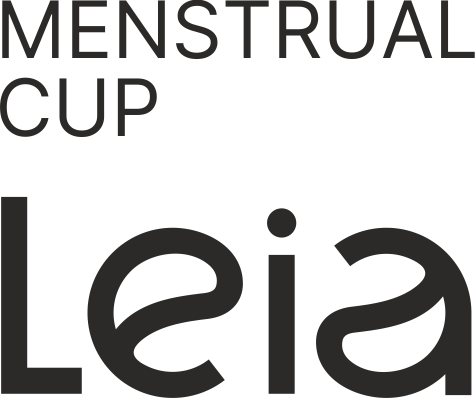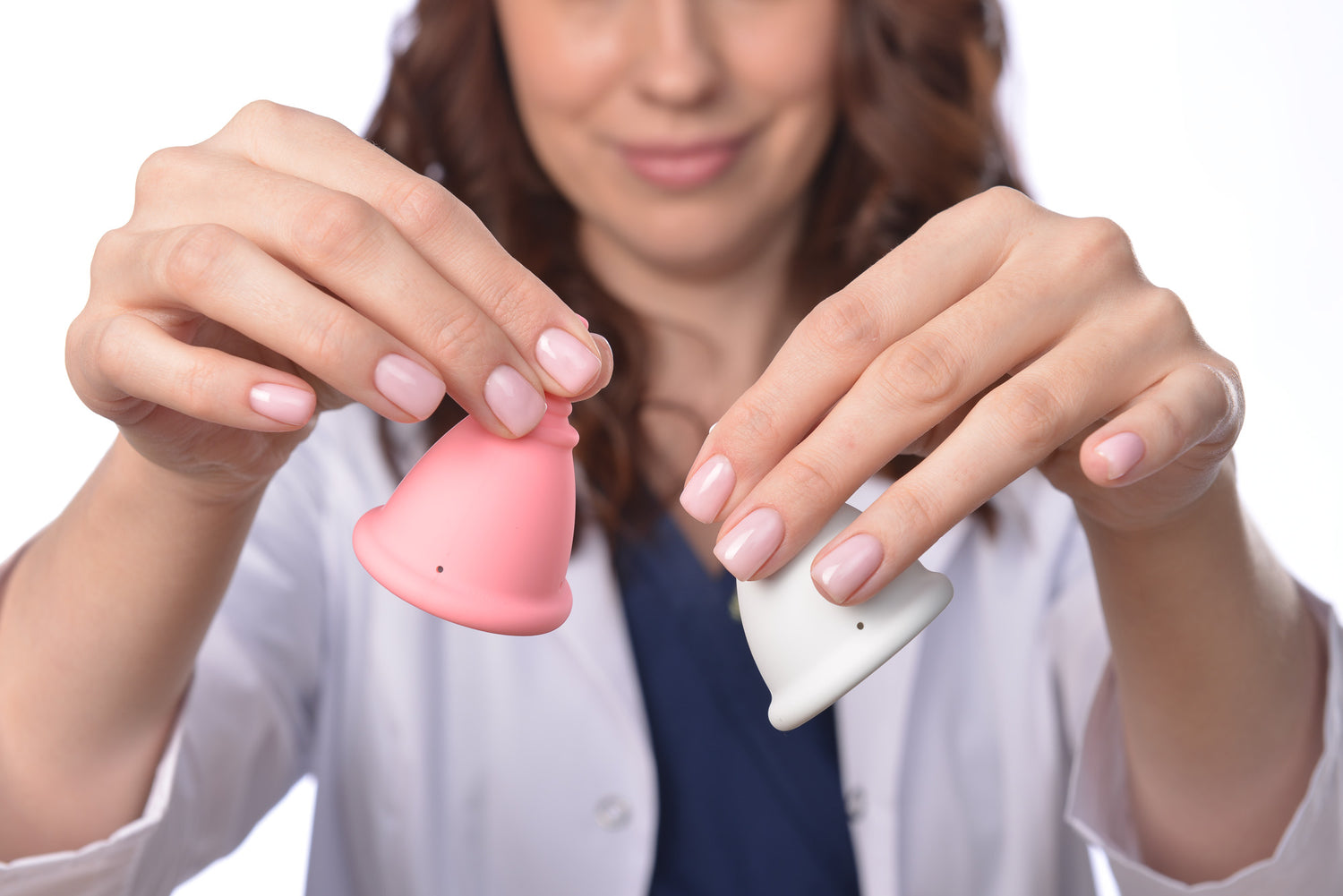
Find a menstrual cup for low cervix. Choosing the optimal menstrual product can be difficult, especially if you have a tilted or low cervix. Let's look at what the cervix is and which product for menstruation may be most suitable, taking into account the characteristics of your cervix.
The cervix is the lower part of the uterus that connects the uterus to the vagina. It has a cylindrical shape with an opening in the center (the os) that facilitates communication with the vagina. The cervix consists of two parts: the supravaginal and vaginal parts. The supravaginal portion contains muscle fibers, while the vaginal portion is accessible for examination and palpation.
Let's explore the cervix in order to find the ideal menstrual product for you. Whether it be a menstrual cup or disk, it is essential to have a comprehensive understanding of the cervix.
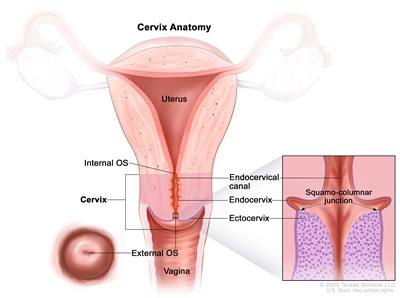
The cervix is composed of smooth muscle, but it differs from the body of the uterus in both structure and innervation.
Its surface lacks pain receptors, which explains why procedures such as medical exams or interventions are often painless. Functionally, the cervix serves as a protective barrier, preventing ascending infections from reaching the uterus. It also plays a crucial role in reproductive health by producing mucus, which either facilitates sperm movement toward the uterus or blocks them, depending on the phase of the menstrual cycle. Additionally, the cervix is involved in labor; once it fully dilates, it forms the birth canal, allowing the delivery process to proceed.
Position Variations of the Cervix:
The height of the cervix can be influenced by several factors:
Menstrual Cycle Phases: The cervix changes its position and texture depending on the phase of the menstrual cycle. During ovulation, the cervix rises higher and becomes softer to facilitate sperm entry. In the luteal phase (after ovulation), it generally lowers and becomes firmer.
Pregnancy: In pregnancy, the cervix tends to be higher and softer, particularly as the body prepares for childbirth. The position may also shift depending on how far along the pregnancy is.
Childbirth History: Women who have given birth may experience changes in the cervix's position due to the physical changes in the pelvic area. This can result in a slightly lower cervix.
Hormonal Levels: Hormones like estrogen and progesterone affect the cervix's position. Higher estrogen levels (as during ovulation) make the cervix rise, while lower estrogen (as in the menstrual phase) may cause it to drop.
Pelvic Floor Health: The strength and tone of the pelvic floor muscles can impact the position of the cervix. Weak or stretched pelvic floor muscles (sometimes after childbirth) can cause low cervix.
Anatomy: Each woman’s body is unique, and genetic factors contribute to the natural position of the cervix. Some women may have a naturally higher or lower cervix due to their individual anatomical structure.
Age: As women age, particularly after menopause, the cervix may move to a slightly lower position due to hormonal changes and the natural decrease in muscle tone and elasticity.
So, the cervix’s height and position can change throughout a woman’s life, depending on these factors.
What are the different types of cervical height?
In this regard, the question arises: why should you pay attention to this aspect? Consider a situation where a woman acquires a menstrual cup that does not suit her individual characteristics. If you do not take into account, for example, the tilted position or low position of the cervix, problems with your menstrual product may arise such as leaks, discomfort, or even pain.
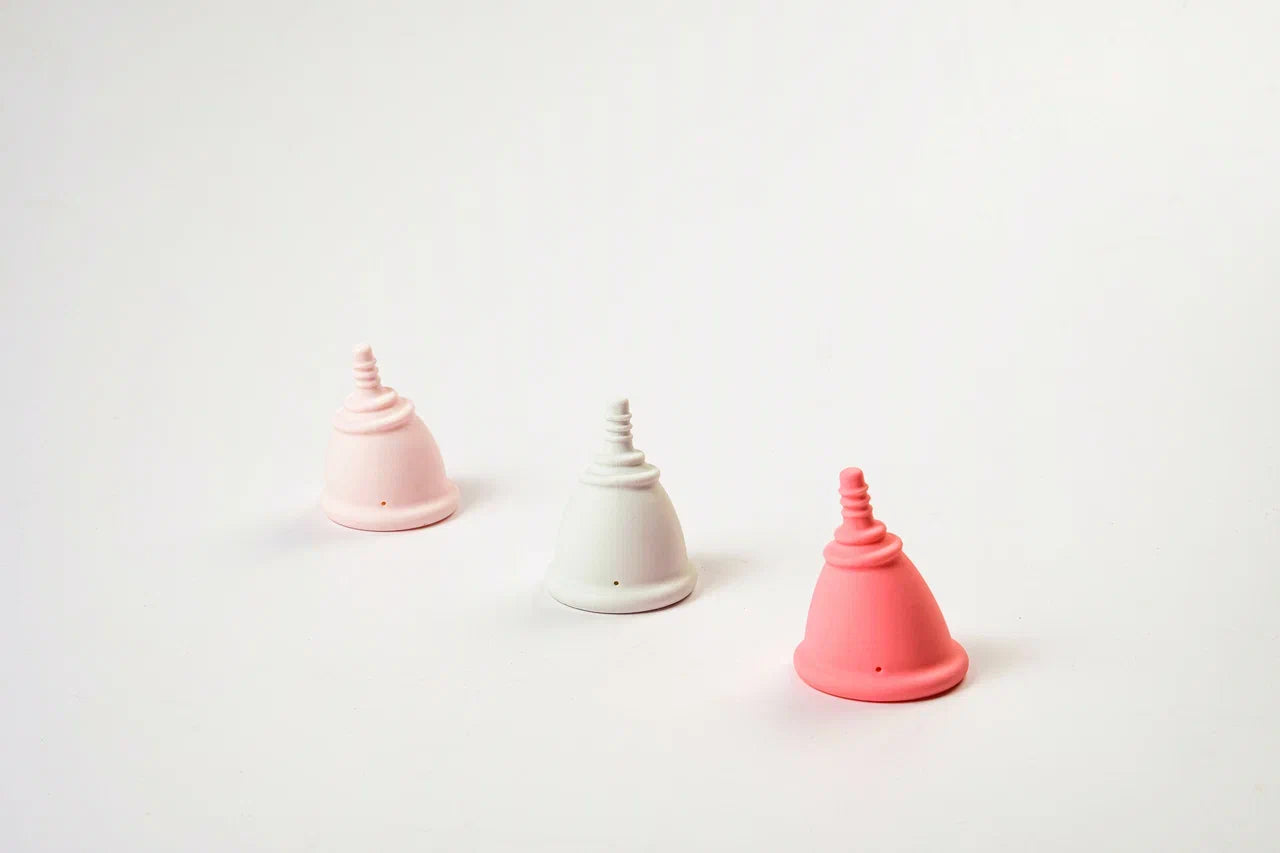
• High Position: The cervix is located high in the pelvic area, which is common for women with longer vaginas. This position generally doesn’t cause discomfort and is considered normal.
• Medium Position: This is one of the most common cervix positions.
• Low Position: The cervix may be lower than usual for various reasons, such as weakened or stretched pelvic floor muscles, or after childbirth. In such cases, the cervix may feel closer to the vagina. A low cervix can be temporary (for instance, during different phases of the menstrual cycle) or permanent.
• Tilted Position: The cervix is typically centrally located relative to the pelvic axis, but it may also tilt to the left, right, or backward. This is a normal variation.
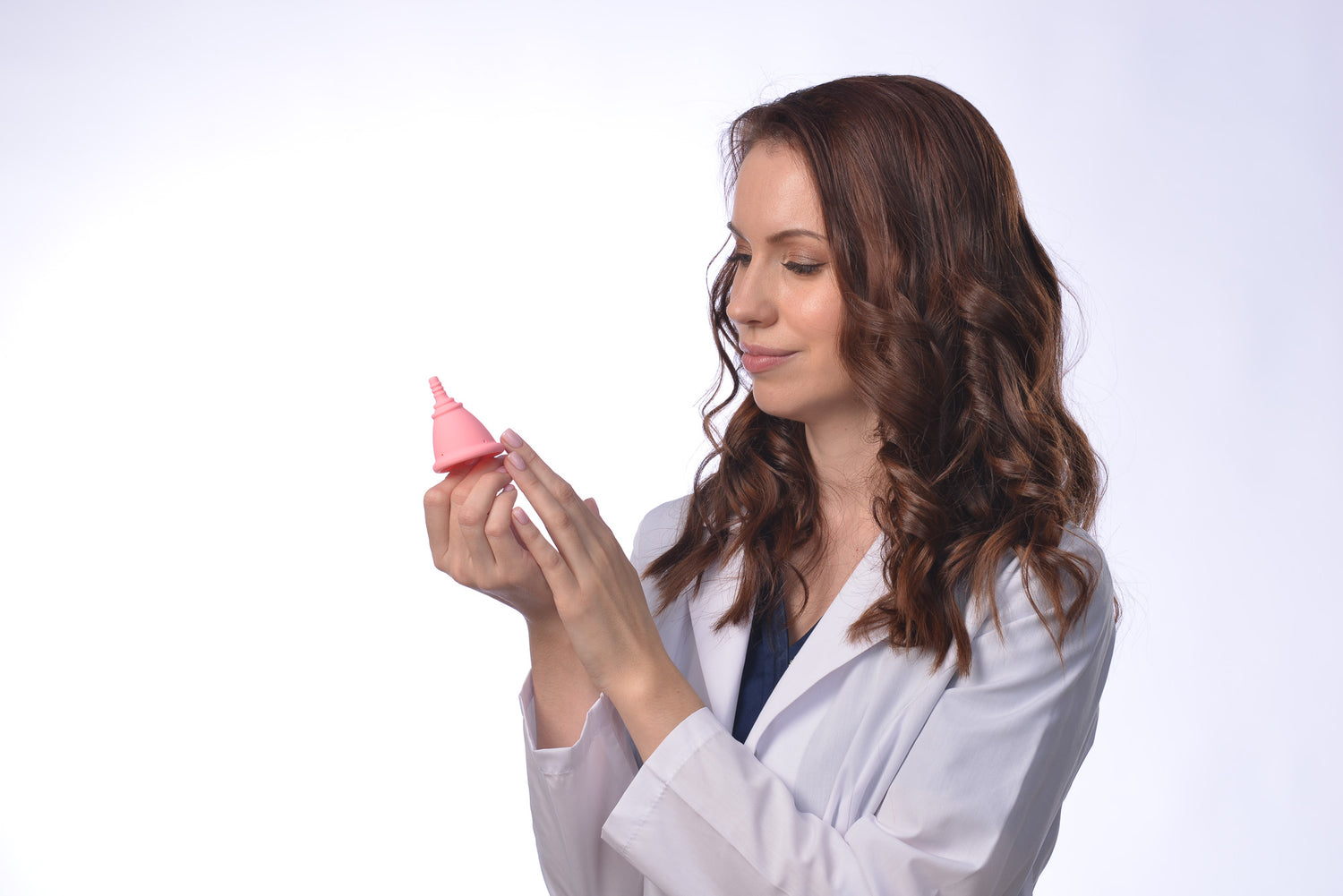
During the menstrual cycle, the cervix undergoes changes.It is very important, taking into account the peculiarities of the cervix and its physiology, when choosing a menstrual cup for a low cervix
Throughout the menstrual cycle, the cervix undergoes various changes. During menstruation, it typically lowers, and the os (opening) may slightly open to allow the release of menstrual blood. During ovulation, the cervix rises and becomes softer, which helps facilitate the entry of sperm into the uterus. After ovulation, the cervix generally lowers slightly and becomes firmer, preparing for any potential pregnancy.
The position and consistency of the cervix change according to the menstrual cycle and various other factors such as pelvic floor health. It's important to note that many deviations in cervix position do not require intervention and are normal anatomical variations.
Is a Low Cervix Dangerous?
A low cervix can be linked to weakened or overstretched pelvic floor muscles. In such cases, the cervix may descend too low. However, the consequences depend on how far the cervix has descended. It’s important to understand that a low cervix doesn’t always lead to problems— for some women, it’s just a normal anatomical variation.
However, if the uterus is prolapsed (along with its vaginal portion), the following complications may occur:
• Frequent Inflammatory Processes: With significant descent, pressure sores may form on the cervix.
• Cervical Insufficiency During Pregnancy: Women with a low cervix are at a higher risk of cervical insufficiency, which can complicate pregnancy.
• Difficulty Using Menstrual Cups and Discs: Most standard menstrual cups may not fit women with a low cervix. However, there are cups designed specifically for this purpose. One such example is the Leia cup, which is perfect for women with a low cervix. It has a moderate height, large capacity, and an angled rim that helps it fit easily, even if the vaginal anatomy changes. The dense medical-grade silicone prevents the walls from collapsing and leaking.

Cervical Disorders and Menstrual Cup
Cervical disorders can significantly impact a woman’s reproductive health and may necessitate careful consideration when choosing menstrual hygiene products. Menstrual cups are a popular, eco-friendly alternative to traditional pads and tampons, but they may not be suitable for everyone, especially those dealing with certain cervical conditions. It's important to understand the possible contraindications for menstrual cup use and the conditions that may require special attention.
Cervical disorders include a wide range of health issues that affect the cervix, the lower part of the uterus connecting to the vagina. These can range from mild to severe and may include conditions such as
1. cervicitis (inflammation of the cervix),
2. cervical polyps (benign growths),
3. cervical dysplasia (abnormal cell growth), and cervical cancer.
Any of these conditions can alter the structure and function of the cervix, potentially influencing whether it is safe to use a menstrual cup.
Inflammatory processes
One of the most important considerations is the presence of inflammatory processes in the cervix or vagina. Inflammation, especially when acute or during the exacerbation of an existing condition, can make the cervix and vaginal walls more sensitive and prone to irritation. In these cases, using a menstrual cup may worsen the irritation, cause discomfort, or even lead to further damage. For example, if a woman is experiencing cervicitis (which is often caused by infection), inserting a menstrual cup may introduce bacteria, potentially aggravating the infection and hindering the healing process.
Injuries and damages
Another contraindication is the presence of open wounds or any type of damage to the cervix or vagina. If there are tears, cuts, or abrasions in the cervix or vaginal walls, using a menstrual cup could potentially introduce bacteria into the affected area, leading to infections or further injury. This is particularly relevant for women with cervical ectropion, a condition in which the cells lining the inside of the cervix are displaced and can lead to sensitivity and bleeding. In such cases, the menstrual cup could irritate the cervix and exacerbate the symptoms.
Postpartum
Postpartum women should also be cautious when considering menstrual cup use. After childbirth, the cervix and vaginal walls undergo healing and may still be sensitive. The menstrual cup, especially if not inserted carefully, could irritate or damage tissues that are still recovering. Doctors usually recommend waiting until the cervix has fully healed and any vaginal tears or stitches have healed before using a menstrual cup.
Malignant diseases of the reproductive system
Additionally, women with malignant diseases of the reproductive system, such as cervical cancer, should consult with their physician before using a menstrual cup. Although menstrual cups do not directly interfere with cancer treatments, certain medical conditions or ongoing treatments (such as radiation or chemotherapy) can make the vagina and cervix more sensitive. In such cases, your doctor can guide you on the best menstrual hygiene options based on your condition.
We strongly advise against using a menstrual cup in the case of untreated infections, open wounds, or any condition that could be worsened by inserting a foreign object into the vagina. In these situations, traditional menstrual products like pads or tampons may be a safer alternative until the condition has been addressed and cleared by a healthcare professional.
Remember, your health and safety are our main priority. Always consult with a specialist before making any decisions about your menstrual hygiene, particularly if you have any cervical or vaginal disorders. They can provide personalized advice based on your health status and recommend the most suitable products for your needs. Taking care of your health should always come first, and making informed decisions with the guidance of a professional is essential.
You can find more answers to questions about women's health and the characteristics of the female body in our blog
How To Measure Cervix Height
This is an important consideration when choosing the right menstrual cup for a low or tilted cervix.
To determine the height of your cervix on your own, you can perform a simple test at home. This will help you understand whether you have a low cervix or if it is positioned higher. Here are the steps:
1. Preparation: Ensure your hands are clean and wash them thoroughly. You can perform the test while lying on your back with your knees bent or sitting on the toilet—choose whichever is more comfortable. It’s important to stay relaxed for maximum comfort.
2. Procedure: Insert your fingers (index and middle) into your vagina and gradually move deeper until you feel the cervix. The cervix feels smooth, firm, and rounded, with a small opening in the center (the os).
3. Determine the Height:
The position of your cervix can be categorized into three types. A low cervix is when you can touch it after inserting your fingers by 1-2 phalanges. If your cervix is located at the middle of your fingers, it is considered to be at a medium height. A high cervix is when you need to insert your fingers all the way to the end in order to feel it.
4. Additional Recommendations: This test can be done at different times of your cycle, as the cervix may change position depending on the phase of menstruation.

Which menstrual product is best for women with a low cervix?
Determining the cervix height helps when choosing a menstrual cup, as the wrong cup size can cause discomfort or leakage. Menstrual cups can be a much more comfortable and effective hygiene option for women with a low cervix compared to traditional products like pads and tampons for several reasons:
Better Fit and Leak Prevention.
Menstrual cups create a hermetic seal inside the vagina, preventing menstrual fluid from leaking. When chosen correctly, they sit securely, without feeling inside the body.
Longer Wear Time and Comfort
A menstrual cup can be worn for up to 12 hours, unlike pads or tampons, which need to be changed every few hours. This is especially convenient for women with a low cervix, as the cup can be placed deeper and stay in place without frequent adjustments.
Traditional tampons may cause discomfort with a low cervix since they need to be inserted deeper. A menstrual cup, especially one with a low profile and anatomical shape like Leia, allows for comfortable insertion without the feeling of a foreign object inside.
Lower Risk of Toxic Shock Syndrome (TSS)
Although both tampons and cups can pose a risk of TSS, studies show that this risk is significantly lower with menstrual cups. Tampons absorb fluid and may promote bacterial growth, while a cup contains menstrual blood without drying out the vagina, reducing this risk.
Eco-friendly and Cost-effective
Menstrual cups last for years, unlike disposable products like pads and tampons, which makes them more environmentally friendly and economical.
Suitability for Active Lifestyles
For women with a low cervix, menstrual cups are ideal for activities like sports, swimming, and dancing, as they stay securely in place, while pads or tampons may shift or leak.
Safe for Health
Medical-grade silicone or hypoallergenic materials used in menstrual cups are safe, causing no irritation and free from harmful chemicals, unlike some pads or tampons that may contain fragrances or chemicals.
Menstrual cups can be a great alternative for women with a low cervix, offering comfort, reliability, and minimizing risks. It’s important to choose the right model for your body’s anatomy and menstrual needs.

Cups like Leia, designed for women with a low cervix, can be the ideal choice for those seeking comfort and safety
-

OB/GYN Designed LEIA Menstrual Cup — Metal Case
More detail -

OB/GYN Designed LEIA Menstrual Cup — Clear Package
More detatil -

Leia Metal Case
More detail
Menstrual Disc vs Cup for a Low Cervix?
Using a menstrual disc with a low cervix may not be optimal for several reasons related to anatomical features and functionality:
1. Poor Disc Fixation: The disc sits around the cervix, but with a low cervix, it may not stay in place properly, potentially causing shifting or even falling out, leading to leaks and discomfort.
2. Difficulty in Insertion: For women with a low cervix, placing the disc correctly may be more difficult, especially if the cervix is too low. Unlike a menstrual cup, which stays securely in place, the disc may be less stable.
2. Discomfort and Foreign Body Sensation: The disc may feel like a foreign object when placed at the cervix, especially if it shifts out of place. A menstrual cup, however, may be more comfortable as it doesn’t require such precise positioning.
3. Difficulty Removing the Disc: Removing a menstrual disc can be tricky for women with a low cervix, as it requires careful positioning. A menstrual cup, by contrast, is easier to remove.
3. Higher Risk of Leaks: Menstrual discs may struggle to form a proper seal, increasing the likelihood of leaks, especially if not positioned correctly. A menstrual cup, on the other hand, forms a secure seal and prevents leaks.
For women with a low cervix, a menstrual cup is a more reliable and comfortable option than a disc.
Choosing the Menstrual Cup for a Low Cervix

When choosing a menstrual cup, factors such as cervix height and size are important. For women with a low cervix, it’s crucial to select a cup with a lower profile and firm material to avoid leaks. Cups with an anatomical shape, like Leia, are designed for women with low cervixes and offer a snug fit for comfort and leak prevention. It’s important to choose a size that suits both your anatomy and flow volume.
With the right menstrual cup, such as Leia, you can enjoy the convenience and comfort of a more eco-friendly and reliable menstrual solution.
FQA
Can I use a menstrual cup if I have a low cervix?
Yes, you can use a menstrual cup if you have a low cervix, but not all menstrual cups are suitable for this. When choosing a menstrual cup, it's important to select one that has a small height and is anatomically shaped to match the natural curve of your vagina. The Leia best menstrual cup for people with a low cervix because it has an anatomical shape, a smaller height, and a firm ring that helps create additional reliable fixation for comfort and security.
How to put in a menstrual cup if I have a low cervix ?
If you have a low cervix, no additional skills are required to insert a menstrual cup. The process is similar to that of those without a low cervix, but it’s important to choose a folding method for the cup that you find most comfortable. Make sure the cup opens fully once it’s inserted to ensure proper suction and leak protection. If you’re using a cup with an asymmetrical shape, gently rotate the cup after insertion to place it in the most comfortable and secure position for you if you need it
Can you have sex with a menstrual cup?
No, it's not recommended to have sex with a menstrual cup in. The cup is designed to sit low in the vaginal canal to collect menstrual fluid, which can interfere with intercourse. If you’re planning to have sex, you’ll need to remove the menstrual cup first.
Can I use a menstrual cup if I have cervical erosion?
No; you should avoid using menstrual cups if you have any cervical diseases, including cervical ectropion (eversion). Contact with a foreign body (such as a menstrual cup) and retention of menstrual fluid can aggravate symptoms
